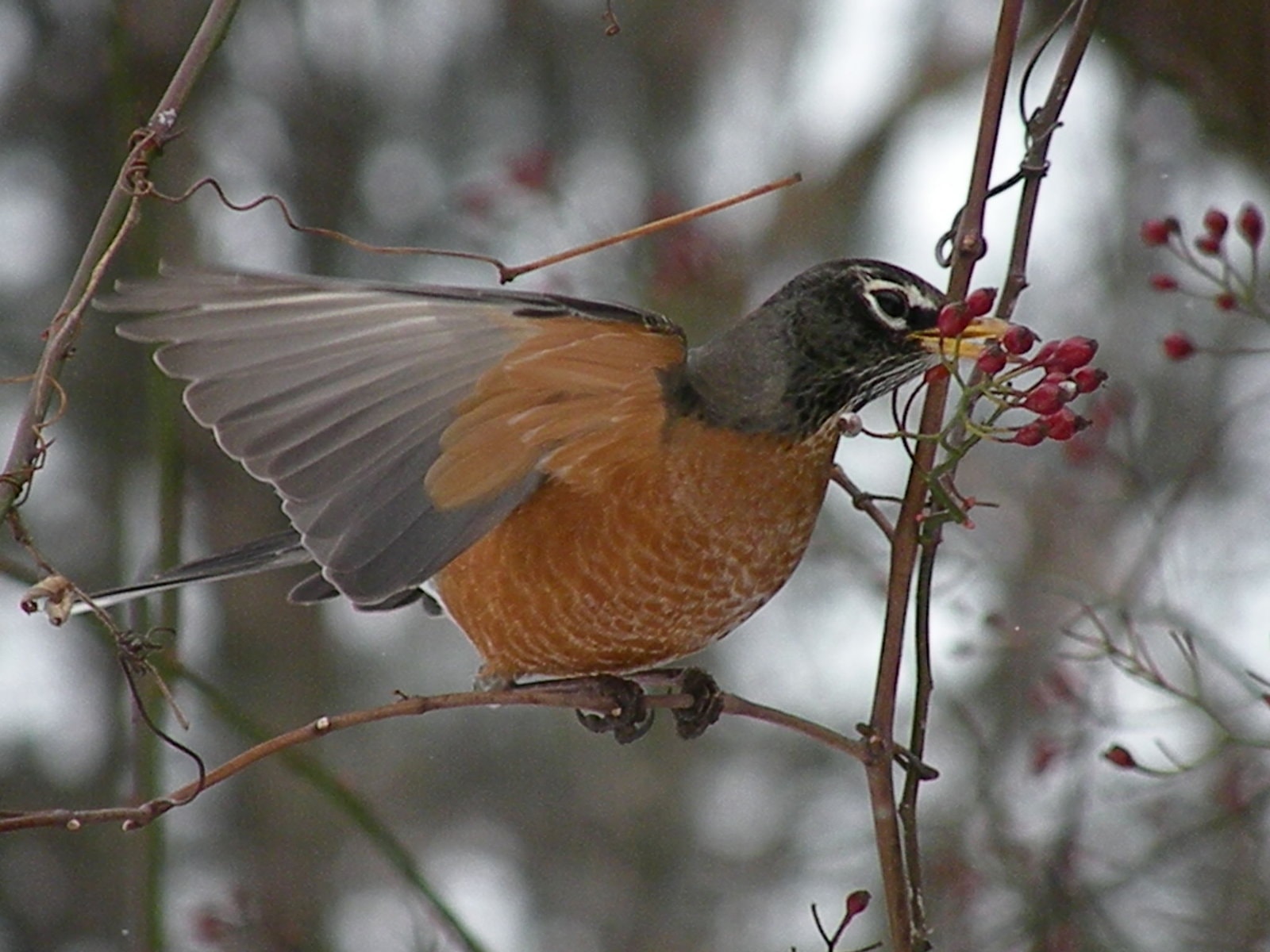Can you imagine what it must be like to be a bird braving a cold Canadian winter? It always amazes me how anything so small can survive such conditions.
I know that on those frigid January days, I don’t want to spend any length of time outside, besides all day, every day.
Food can become scarce for birds during the winter months, so the food that you provide for them could be the difference between surviving and starvation.
What better way to provide food for the birds in the winter than to plant shrubs that will provide berries and/or seeds for them to eat throughout the winter?
It’s best to pick plants that are native to your region as these are the ones that birds will recognize as safe to eat.
These winter plants will not only be good food for your feathered friends, but will also add some colour and life to your garden throughout the winter months.
Here are a few must-have shrubs to add to your winter garden (all of which are native to this region, save for beautyberry):
- Winterberry (Ilex verticillata)
- Beautyberry (Callicarpa bodonieri)
- Black chokeberry (Aronia melonocarpa)
- Cedar (Thuja occdentalis)
- Common hackberry (Celtis occidentalis)
- Crabapples (Malus)
- Viriginia creeper (Parthenocissus)
- Nannyberry (Viburnum lentago)
- Highbush cranberry viburnum (Viburnum trilobum)
Depending on the weather and how hungry the birds are, the berries or seeds on the above-mentioned plants will persist on into January or February.
Some will even remain on the plants throughout the winter.
During periods of bad weather and towards the end of winter, other sources of food for the birds may become essential for their wellbeing.
By feeding birds in the winter, you are providing them with a constant supply of food so that they do not have to waste energy looking for insects or searching for berries.
The best winter food for most birds are those items that are higher in calories and in fat. If only all our diets were that way, right?
Sources of higher fat content are nuts, lard, and suet. These sources of fat will provide additional energy for the birds.
One of the most popular seeds loved by cardinals, blue jays, nuthatches, finches and other songbirds is the black sunflower seeds.
If you are using a mix of seeds, avoid using mixes that contain oats or milo. Fruit like apples and pears are also a desired treat.
Mealworms, cracked corn, millet and niger seeds are other favoured floods.
If using peanut butter, make sure that it is unsalted as salt can harm the birds.
Place bird feeders in areas where predators like cats and foxes can’t hide.
Place the feeders 10 to 12 feet away from shrubs or brush piles.
The items that should never be used as bird feed are table scraps, rotten food, spoiled seed, meat, milk, salt or bread.
Like any other living thing, a clean source of water is also essential for a bird’s life.
Offering a birdbath during the winter season helps wild birds easily find this valuable resource.
Of course, here, where temperatures go below freezing, you will have to consider a heated birdbath.
Offering a birdbath during the winter season helps wild birds easily find this valuable resource. This in turn helps them reserve energy for other activities such as keeping warm.
By providing some extra food for the birds this winter, you are not only helping them make it through the winter, but also providing yourself with hours of entertainment as you watch them play in the snow.
Joanne Young is a Niagara-on-the-Lake garden expert and coach. See her website at joanneyoung.ca










